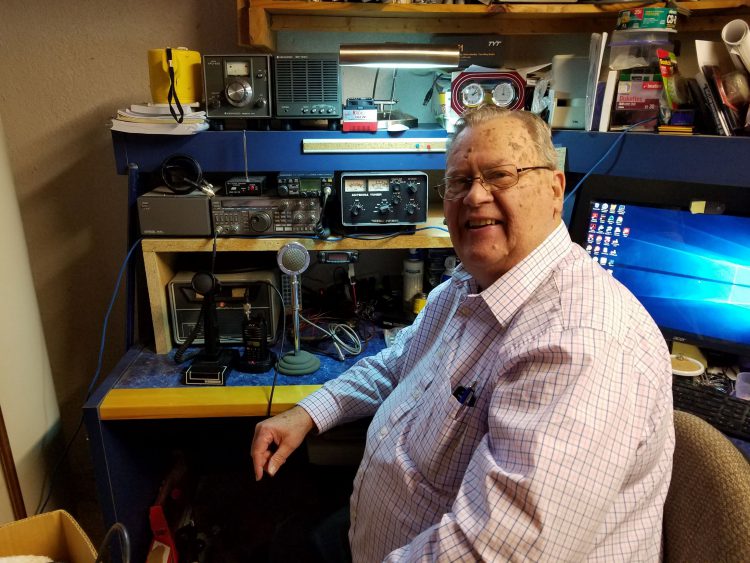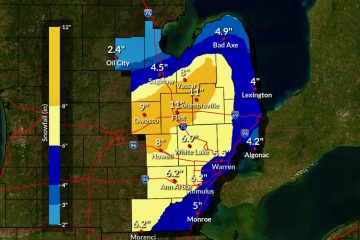SKYWARN volunteers keep their eyes on the skies

Apr. 25, 2019 PLYMOUTH EAGLE.
Plymouth Michigan News
Julie Brown
Staff Writer
Those folks often observed sitting outside in the wind and sometimes rain watching the sky, are believe it or not, doing it to help their neighbors.
Volunteers, like Cheryl Rotole of Plymouth Township, are graduates of SKYWARN storm spotter training.
“I work from home,” said Rotole, who lives in western Plymouth Township where she often sees storms coming in from Washtenaw County. “I’m very interested in weather and I like being helpful, almost to my detriment. I’m in a good position and if I can do that I want to.”
The National Weather Service began the training for weather spotters in the 1970s, and they’re required to undergo periodic training to remain active. National Weather Service meteorologist Andrew Arnold led a recent training session under the auspices of the Livonia Amateur Radio Club and Livonia Police Department.
Arnold noted ham radio operators have long been active in SKYWARN, saying, “That’s another way that information gets to us.”
Jack Stange of Westland is a member of the Garden City Amateur Radio Club and is also a weather spotter. Stange, who was also at the Livonia training is comparatively new to the effort.
“Last year was the first time I took this course. I was out of radio a long time and came back,” he said.
He was first licensed at age 14 and left radio in 1972, serving in the military.
“It gives me the opportunity to be one of the first ones in Westland,” to see weather coming from Canton to the nearby west, Stange said.
Stange, also the chaplain for American Legion Post 251 of Westland, sits out in wind but is sheltered from rain by an over- pass near railroad tracks in Westland. He hasn’t reported a major storm yet. “It’s well worth it, it really is. From reporting, they get an idea of the track of the storm. This is also a good thing to go through if you’re scared of storms,” said Stange.
Arnold, the NWS meteorologist, noted Facebook and Twitter now help some storm spotters report in with photos. The phone remains well used, ham radio operators have their own ways to report in, and email is useful for non-urgent follow ups, said Arnold.
Some 350,000 to 400,000 SKYWARN storm spotters work throughout the country, with Arnold noting some limits of Doppler radar in detecting severe storms. “Computers haven’t taken over every-body’s job at the National Weather Service,” Arnold said of the White Lake office here.
“Spotters are incredibly important to the National Weather Service.”
Arnold also covered what to report, with a strong focus on severe storms that can hurt people or damage property. He noted opportunities for those interested also to report in on rainfall and snowfall totals periodically.
Arnold also explained key NWS facilities throughout the country, noting, “There’s a lot of coordination between the local office and these national centers.”
Online weather-related training is offered as well, and local amateur radio clubs welcome new members who wish to join and assist with storm reporting and other emergency preparedness.
Plymouth Voice.
Photo: Associated Newspapers



